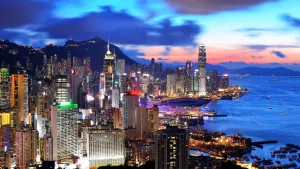Major Risks Associated with Steel Production in Hong Kong: Challenges Facing the Industry

Steel production is a critical component of global infrastructure, yet in Hong Kong, this industry faces several significant risks. While the region is more dependent on imports for its steel needs, the risks associated with steel production in Hong Kong remain relevant for businesses, investors, and stakeholders involved in the industry. Understanding these risks is crucial to navigating the challenges that affect both the local and global steel markets.
1. Limited Local Production Capacity
One of the primary risks facing steel production in Hong Kong is the region’s limited production capacity. Hong Kong has long relied on imported steel, primarily from mainland China, to meet local demand. The lack of large-scale steel manufacturing facilities means that Hong Kong is highly vulnerable to supply chain disruptions. Any delay or restriction in the supply of steel from foreign sources can lead to project delays, increased costs, and an overall slowdown in the construction and infrastructure sectors.
2. Supply Chain Vulnerabilities
Given Hong Kong’s dependence on external sources for steel, any disruption in the global steel supply chain can have severe consequences for the industry. Trade disputes, natural disasters, or logistical challenges—such as shipping delays—can create bottlenecks that affect the timely delivery of steel to Hong Kong. The global supply chain was significantly impacted by the COVID-19 pandemic, highlighting the fragility of international trade. Steel producers and businesses in Hong Kong must now focus on diversifying their supply chains and maintaining strong relationships with multiple suppliers to reduce the risk of shortages.
3. Environmental Regulations and Compliance
In recent years, the Hong Kong government has implemented stricter environmental regulations aimed at reducing carbon emissions and promoting sustainable development. While these regulations are essential for long-term environmental goals, they pose significant challenges for the steel industry. Steel production is an energy-intensive process that generates substantial greenhouse gas emissions. Producers must now invest in cleaner technologies and comply with regulations on waste management, air quality, and energy consumption. These compliance costs can be a heavy financial burden for steel companies, especially those looking to expand or modernize their operations.
4. Market Volatility
The global steel market is highly volatile, and Hong Kong is not immune to these fluctuations. Steel prices are influenced by various factors, including raw material availability, geopolitical tensions, and demand from industries like construction and automotive manufacturing. Market volatility presents a major risk for steel producers and suppliers in Hong Kong, as sudden changes in price can affect profitability and long-term planning. To mitigate this risk, companies must adopt flexible strategies and closely monitor market trends to adjust their operations accordingly.
5. Dependence on Mainland China
Hong Kong’s close economic ties with mainland China offer both opportunities and risks. China is the world’s largest steel producer, and Hong Kong benefits from its proximity to Chinese steel manufacturers. However, Hong Kong’s reliance on China also creates vulnerabilities. Any changes in China’s steel production policies, export tariffs, or domestic demand could directly impact the availability and cost of steel in Hong Kong. Additionally, China’s efforts to reduce carbon emissions by limiting steel production may further strain the supply chain, forcing Hong Kong to seek alternative sources of steel from other countries.
6. Geopolitical Risks
Geopolitical tensions between major steel-producing countries can have a profound effect on the global steel market, and by extension, steel production in Hong Kong. Trade disputes, sanctions, and political instability in regions that supply steel or raw materials, such as iron ore, can disrupt the flow of resources and cause price spikes. Hong Kong’s strategic location makes it a critical trading hub, but it also means that it is vulnerable to shifts in international relations. To manage these risks, businesses in Hong Kong must remain agile and prepared for sudden changes in trade policies or international partnerships.
7. Technological Advancements and Adaptation
The steel industry is undergoing rapid transformation due to technological advancements, particularly in automation and green technologies. Steel producers in Hong Kong must keep pace with these innovations to remain competitive. However, adopting new technologies requires significant capital investment, which can be risky for smaller steel companies or those with limited resources. Failure to integrate modern technologies may result in inefficiencies and higher production costs, putting companies at a disadvantage in a highly competitive market.
Conclusion
The major risks associated with steel production in Hong Kong reflect broader global challenges, from supply chain vulnerabilities to environmental regulations and market volatility. While Hong Kong’s steel production capacity is limited, its role as a critical trade hub means that it remains exposed to these risks. Companies involved in the steel industry must adopt resilient strategies, invest in sustainable practices, and remain flexible to navigate the complex landscape of steel production and trade. Understanding and mitigating these risks will be essential for long-term success in this dynamic market.



